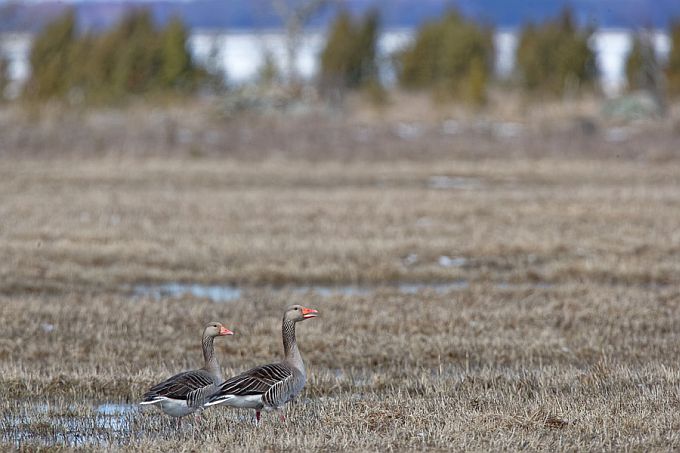At the end of the year, the Ministry of the Environment announced that it would support hunting of migratory geese to prevent damage to farmers. The Estonian Ornithological Society's Bird Protection Commission continues to believe that hunting geese on their spring migration is unethical and does not solve the problem more effectively than using non-lethal deterrence methods.
At the end of last year, the Riigikogu* Committee on Rural Affairs again discussed the issue of geese damage and spring hunting, but this time without the participation of the Ornithological Society. The Ministry of the Environment sent a letter to the Rural Affairs Committee after the meeting, stating that the deterrent measures used so far to prevent damage caused by geese did not produce results. The ministry also took the view that "In Estonia, the use of deterrent hunting as a further deterrent to prevent geese damage is justified as a pilot project", by deterrent hunting meaning springtime goose hunting.
*Riigikogu - Parliament of
The Ornithological Society is of the opinion that the slaughter of birds in spring migration is unethical and contrary to the principles of nature conservation. A deterrent hunting would not produce the expected result, as hunting a few hundred birds of the around hundred million geese in
"Deterrent spring shooting does not bring us closer to solutions. There is still no research to show that hunting is a more effective way to protect crops than scaring birds from the field by less harsh means," said Veljo Volke, programme manager for the Ornithological Society. "The decision to kill birds in the spring must be preceded by a study-based impact assessment of what non-lethal methods work and to what extent. For example, the establishment of separate feed fields for migratory birds has not yet been implemented in
In the opinion of the Ornithological Society, for reducing the losses to farmers by birds it is necessary to limit bird hunting in the wetlands, protected areas and their neighbourhoods, as well as to carry on more efficient maintenance of coastal meadows and to establish feed fields for migratory birds .
Background material:
Riigikogu Maaelukomisjoni 06.11.2018 istungi protokoll: https://www.riigikogu.ee/download/f5a7cebc-7c03-469a-b2f2-e847ebd70d93
Riigikogu Maaelukomisjoni 22.11.2018 kiri Keskkonnaministeeriumile "Lindude ja loomade poolt põllumajandusele tekitatud kahju": https://www.riigikogu.ee/download/8f56cf0c-5c18-4665-9e87-1fd3d28ae5ab
Keskkonnaministeeriumi 27.12.2018 vastuskiri Riigikogu Maaelukomisjonile "Selgitus lindude ja loomade poolt põllumajandusele tekitatud kahju osas"
https://www.riigikogu.ee/download/79b02a54-2f84-4d78-af8e-f460e1b217b9
More information:
Veljo Volke
Bird Conservation Committee, Estonian Ornithological Society
5615 7088
veljo.volke@eoy.ee



